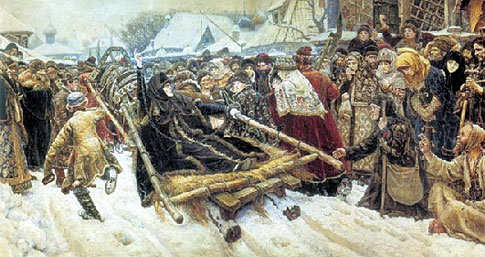activities of the country’s
Leah Grundig – the art of anger and struggle
 Expressive ink drawings, expressive genre compositions and portraits made with black chalk, aggressive engravings based on the confrontation of light and shadow … figures of the unemployed, touching images of proletarian children and women, exhausted by fear and need. Other sheets show working demonstrations and meetings, heated debates and discussions. The German artist Lea Grundig was vividly and accurately embodied in the plight of the workers and the ripening feeling of protest in their ranks during the dark days of the fascist nightmare. Continue reading
Expressive ink drawings, expressive genre compositions and portraits made with black chalk, aggressive engravings based on the confrontation of light and shadow … figures of the unemployed, touching images of proletarian children and women, exhausted by fear and need. Other sheets show working demonstrations and meetings, heated debates and discussions. The German artist Lea Grundig was vividly and accurately embodied in the plight of the workers and the ripening feeling of protest in their ranks during the dark days of the fascist nightmare. Continue reading
Konstantin Meunier – an artist who glorified the proletariat
 The life of the Belgian master Constantin Meunier is not eventful. But his creative biography is unusual. He began as a sculptor, visiting the class of the Academy of Fine Arts in Brussels and the workshop of Sh. O. Freken, a follower of classicism. Then for many years engaged in painting. Only at the age of 50 he returned to sculpture – a unique case in the history of Western European art of that era.
The life of the Belgian master Constantin Meunier is not eventful. But his creative biography is unusual. He began as a sculptor, visiting the class of the Academy of Fine Arts in Brussels and the workshop of Sh. O. Freken, a follower of classicism. Then for many years engaged in painting. Only at the age of 50 he returned to sculpture – a unique case in the history of Western European art of that era.
At the same time, Meunier continued to work as a painter, creating major works in 1890–1900s. The master found in painting compositional solutions, which he later transferred to sculpture. Continue reading
Diego Rivera – the great Mexican painter
 When the Great October Socialist Revolution took place in Russia, a revolutionary struggle was going on in Mexico for seven years. Armed peasants opposed the dictatorship of the rich and the priests, the landowners who seized fertile land, against the dominance of foreign capitalists. The war was unusually stubborn and cruel. The reactionary militia malice, American troops twice invaded Mexico. The bourgeoisie traitorously turned its weapons against the peasant detachments led by the popular leaders Francisco Villa and Emiliano Zapata. The rebels showed heroism and won great victories.
When the Great October Socialist Revolution took place in Russia, a revolutionary struggle was going on in Mexico for seven years. Armed peasants opposed the dictatorship of the rich and the priests, the landowners who seized fertile land, against the dominance of foreign capitalists. The war was unusually stubborn and cruel. The reactionary militia malice, American troops twice invaded Mexico. The bourgeoisie traitorously turned its weapons against the peasant detachments led by the popular leaders Francisco Villa and Emiliano Zapata. The rebels showed heroism and won great victories.
In February 1917, a constitution was adopted. Continue reading



